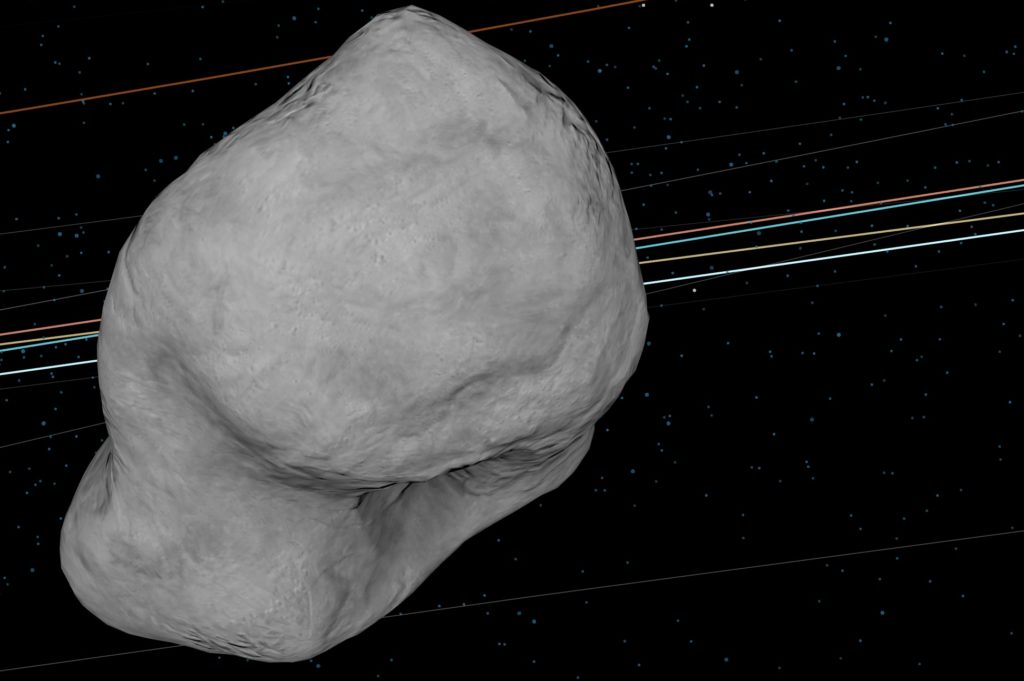On January 18, a “potentially hazardous” asteroid called 7482 (1994 PC1) will pass comparatively close to Earth, NASA has shared. While it’s expected to still be a safe distance away, you may want to track the asteroid as it passed the planet (and learn how to track others that will come after it.) Here are all the details you need.
Track Asteroid 7482 (1994 PC1)
You can track Asteroid 7482’s exact location using NASA’s website at this link. NASA updates this beautiful website live with the asteroid’s most recent information, current volocity, diameter, orbital path, and closest approach to Earth. You can even move the timeline right below the asteroid to predict where it will be next.
KIII-TV reported that the asteroid is moving at 43,754 mph and is designated “potentially hazardous” due to its size of just greater than 1 km in diameter, and how close it will get to Earth. It’s expected to be 1.23 million miles away.
EarthSky noted that if you have a backyard telescope, you should be able to see it. It will pass closest to earth on January 18 at 4:51 p.m. Eastern, News18 reported.
KIII-TV reported that Nancy Chabot, a chief planetary scientist at Johns Hopkins University’s Applied Physics Laboratory, said that an asteroid of this size hitting the planet wouldn’t be a “global extinction event” but it would cause regional devastation and could wipe out an entire state.
You can actually calculate the impact’s effect by using the Earth Impact Effects Program. You can enter your distance from impact, the projectile diameter and density, impact velocity and angles, along with more information to get an idea of what an impact would do.
See All the Asteroids At Once
NASA has a gorgeous website that will show you all the nearby asteroids at once right here. You can turn on a filter to only show the potentially hazardous objects, which is really interesting. For example, the DART mission is crashing a probe into Dimorphos (the partner of the larger asteroid Didymos) (which is on the list) this year.
On the list is also Bennu, which was the target of the OSIRIS-REx mission that is heading back to Earth after taking a sample.
25143 Itokawa, also on the list, was the first asteroid that was part of a return mission (this once involving a Japan space probe Hayabusa.)
Click on Asteroid Watch at the top (or here) to see the next five that will approach the closest to Earth. As of this article’s publication, the first is 2022 AF5 on Janaury 13 at 7:48 p.m. Then is 2022 AA4 on January 14, then 2022 AG on January 14, then 2022 AV5 on January 15, and 2022 AT2 on January 15. Quite a few smaller ones are passing near Earth before we even get to 7482, which is much larger.
Want to chat about all things post-apocalyptic? Join our Discord server here. You can also follow us by email here, on Facebook, or Twitter.


Leave a Reply